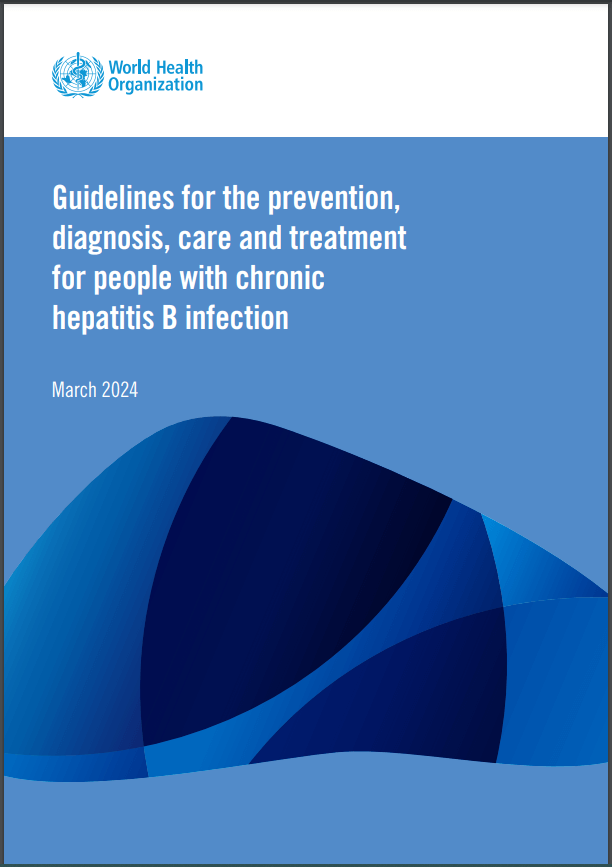At the end of March the World Health Organization (WHO) released new guidelines on the prevention, diagnosis and treatment of chronic hepatitis B (HBV) infection at the 2024 Asian Pacific Conference for the Study of Liver Disease in Japan. These new guidelines provide a substantial simplification and expansion of eligibility for treatment to overcome the common current barriers in access to HBV testing and treatment.

Across the world there are believed to be more than a quarter of a billion people living with chronic hepatitis B, equivalent to almost 10 times the entire population of Australia. This burden of disease is leading to an increasing number of deaths each year.
Globally, the most common cause of infection is is due to mother-to-child transmission at or shortly after birth. In developed countries like Australia this has almost entirely been eliminated through use of infant vaccination and blood safety protocols, but this is something that many developing countries need support to be able to institute. For example, the hepatitis B birth-dose coverage is only 45 per cent globally, with less than 20 per cent coverage in the WHO African Region.
new guidelines prioritise simplified treatment criteria for adults and adolescents and expanded eligibility for antiviral prophylaxis for pregnant women
For people who are living with hepatitis B, antiviral treatment is highly effective. It can improve survival and reduce progression of liver disease and the development of liver cancer. However, major testing and treatment gaps remain. To combat this, the new guidelines prioritise simplified treatment criteria for adults and adolescents and expanded eligibility for antiviral prophylaxis for pregnant women to prevent mother-to-child transmission of HBV. The guidelines also focus on enhancing HBV diagnostics through point-of-care viral load testing, using improved testing protocols, and approaches to delivering high-quality HBV services.
There is also a strengthened emphasis on improving the diagnosis of Hepatitis Delta co-infection
There is also a strengthened emphasis on improving the diagnosis of Hepatitis Delta coinfection, which is a major cause of HBV-related morbidity and mortality. Hepatitis Delta is a virus that can only live alongside hepatitis B, and it can make people much sicker than the hepatitis B would alone, whether through coinfection (catching both viruses at the same time, perhaps through infected blood) or superinfection (catching hepatitis D later, when already living with hepatitis B). (See more in the special Hepatitis D edition of our magazine here.)
Guidelines Overview
The objective of the 2024 guidelines is to provide updated evidence-informed recommendations on key priority topics. These include expanded and simplified treatment criteria for adults but now also for adolescents; expanded eligibility for antiviral prophylaxis for pregnant women to prevent mother-to-child transmission of HBV; and improving HBV diagnostics through use of point-of-care HBV DNA viral load and reflex approaches to HBV DNA testing; and who to test and how to test for HDV infection.
The 2024 guidelines include 11 updated areas with new recommendations:
Expanded treatment eligibility and antiviral prophylaxis
- use of non-invasive tests for staging of liver disease
- who to treat among people with CHB
- first-line antiviral therapies for CHB
- preventing mother-to-child transmission of hepatitis B using antiviral prophylaxis
- treatment of adolescents and children with CHB
Hepatitis B DNA and HDV infection diagnostics
- measurement of HBV DNA to guide treatment eligibility and monitor response
- HBV DNA reflex testing
- HDV testing – who to test and how to test, including reflex testing for hepatitis delta coinfection
HBV Service Delivery
- Eight approaches to promote access and delivery of high-quality health services for CHB
There are also a number of unchanged recommendations from the previous 2015 guidelines, but these have been updated with new context, additional studies and research gaps:
- second-line antiviral therapies for managing treatment failure
- monitoring for treatment response and treatment side effects
- surveillance for Hepatocellular carcinoma (HCC)
- when to stop and restart antiviral therapy
Last updated 10 April 2025
More from:
Enjoyed this article? Subscribe to be notified whenever we publish new stories.
Subscribe for Updates




